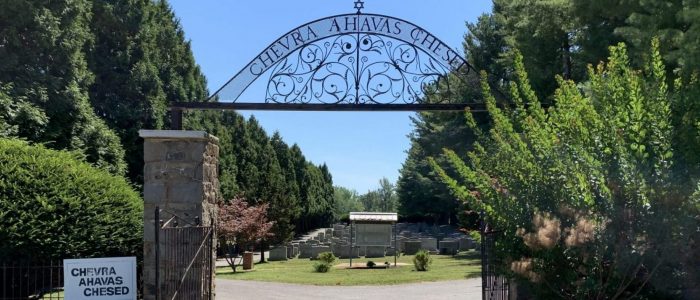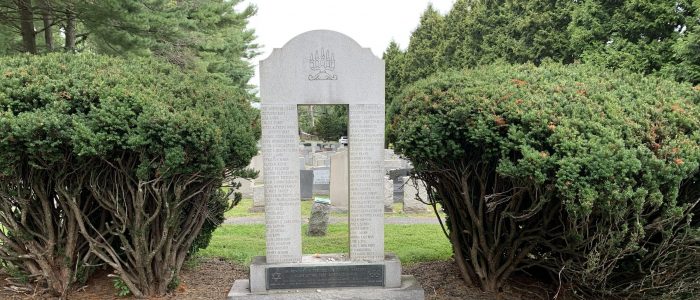Home
Welcome to Chevra Ahavas Chesed!
Refugees from Germany and Austria arrived in Baltimore throughout the 1930s, from Hitler’s rise to power in 1933 until the start of the War in 1939. Most of them escaped without means; many were middle-aged businessmen who had to start from scratch in a strange environment and a new language. In the face of their difficult common problems, several of the new immigrants got together to start a self-help organization. The impetus was the sudden death of a young refugee, with his family forced to accept charity in order to pay for a meager funeral. The group’s first priority was therefore the establishment of a Chevra Kadisha that would both keep funeral expenses low and make sure that all burials were done in strict observance of halacha and Jewish custom.
This was a difficult task in America, where, unlike Europe, there was no official Jewish community that owned and maintained the cemeteries and supported the Chevra Kadisha.
Instead, families had to purchase expensive plots, and professional funeral homes performed the necessary preparations. The founding meeting of the group in November, 1941, took place, ironically, almost exactly three years after Kristallnacht. The men decided that the solution to the burial problem was to acquire their own cemetery, so that member families would have to pay only a small burial and maintenance fee. To save on other costs, they proposed to make “group arrangements” with undertakers and do the Taharas themselves. In this way, they would also do a loving service for their friends and neighbors.
With 150 members present, the organization was established under the name Chevra Ahavas Chesed, the society of those who love kindness (chesed). The name was suggested by Rabbi Simon Schwab, z”l, a fellow German Jew, Rav of the Shearith Israel Congregation on Glen Avenue, and the society’s religious advisor for many years. After Rabbi Schwab moved to New York, he was succeeded by Rabbi Herbert Birnbaum, Rabbi Ervin Preis, z”l, and then Rabbi Moshe Hauer. The current spiritual advisor is Rabbi Yisroel Motzen of Ner Tamid Congregation.
The group had a few other basic aims in its original bylaws, including “mutual aid and support in cases of illness…” and the practice of “loving-kindness in general and to perform charity as much as the means of the organization shall permit.”
The years of the 1940s and 1950s saw the flourishing of Chevra Ahavas Chesed as a fraternal and social organization. It was able to buy one, then another, cemetery. It helped many families in need.
As the members became well established, the organization began to hold regular social events, like a senior citizen’s luncheon, picnics, and Chanukah parties that allowed the families to enjoy each other’s company and give their children a good time.
Chevra Ahavas Chesed was especially gratified to be able to help the Holocaust survivors who came to Baltimore after World War II. As former refugees themselves, its members were able to assist not only with finding homes and jobs and learning English but also by giving the understanding and compassion that was so essential to those who had lived through the concentration camps.
Today, Chevra Ahavas Chesed continues in its primary purpose as a burial society, chevra kadisha, with a membership of about 535 families, comprising 1200 individuals, many of whom are American born or have no German ancestry. It also continues its tradition of substantial financial contributions to day schools, Shaarei Zedek hospital, various tzedakas in Eretz Yisrael, and other institutions in need of regular financial help.
Adapted with permission from Where What When, October 2005. Written by Elaine Berkowitz.








